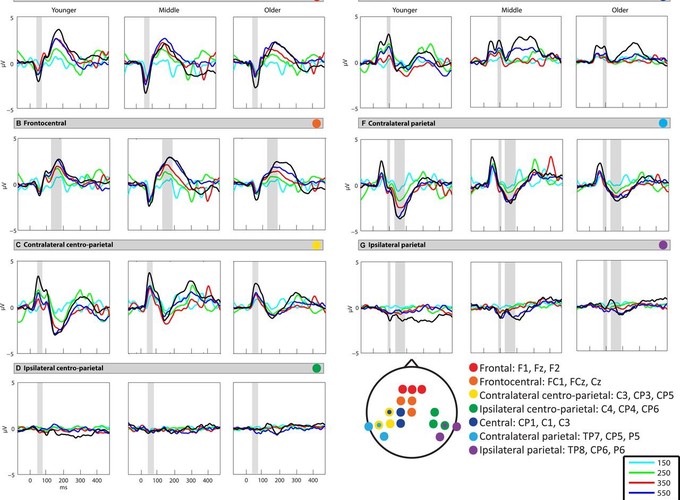The neural dynamics of somatosensory processing and adaptation across childhood: a high-density electrical mapping study
Abstract
Young children are often hyperreactive to somatosensory inputs hardly noticed by adults, as exemplified by irritation to seams or labels in clothing. The neurodevelopmental mechanisms underlying changes in sensory reactivity are not well understood. Based on the idea that neurodevelopmental changes in somatosensory processing and/or changes in sensory adaptation might underlie developmental differences in somatosensory reactivity, high-density electroencephalography was used to examine how the nervous system responds and adapts to repeated vibrotactile stimulation over childhood. Participants aged 6–18 yr old were presented with 50-ms vibrotactile stimuli to the right wrist over the median nerve at 5 blocked interstimulus intervals (ranging from ∼7 to ∼1 stimulus per second). Somatosensory evoked potentials (SEPs) revealed three major phases of activation within the first 200 ms, with scalp topographies suggestive of neural generators in contralateral somatosensory cortex. Although overall SEPs were highly similar for younger, middle, and older age groups (6.1–9.8, 10.0–12.9, and 13.0–17.8 yr old), there were significant age-related amplitude differences in initial and later phases of the SEP. In contrast, robust adaptation effects for fast vs. slow presentation rates were observed that did not differ as a function of age. A greater amplitude response in the later portion of the SEP was observed for the youngest group and may be related to developmental changes in responsivity to somatosensory stimuli. These data suggest the protracted development of the somatosensory system over childhood, whereas adaptation, as assayed in this study, is largely in place by ∼7 yr of age.
